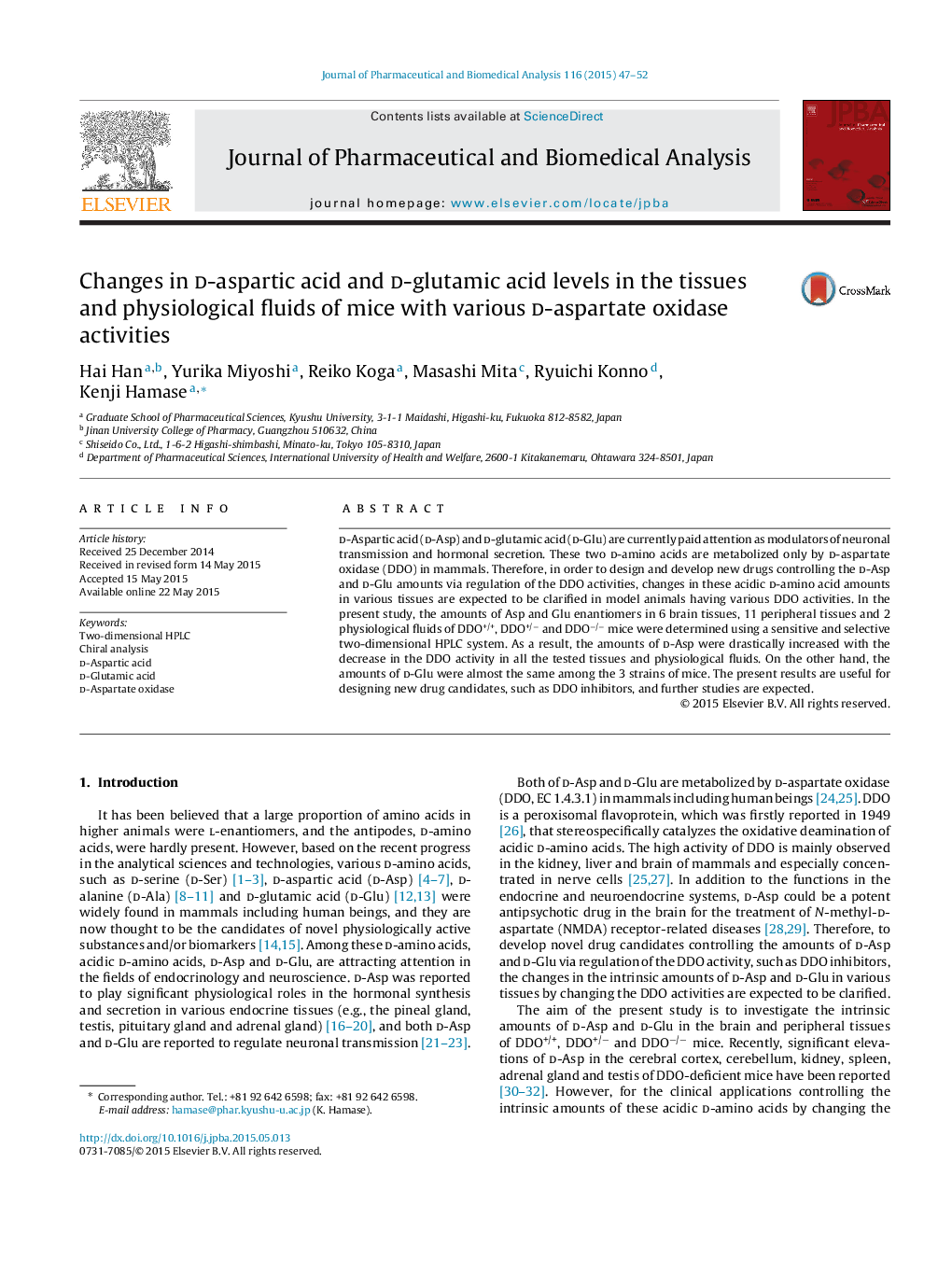| Article ID | Journal | Published Year | Pages | File Type |
|---|---|---|---|---|
| 1220473 | Journal of Pharmaceutical and Biomedical Analysis | 2015 | 6 Pages |
•d-Asp and d-Glu were determined in whole body of DDO-KO mice.•d-Asp were drastically increased with the decrease in the DDO activity.•The amounts of d-Glu were almost the same between DDO-KO and control mice.
d-Aspartic acid (d-Asp) and d-glutamic acid (d-Glu) are currently paid attention as modulators of neuronal transmission and hormonal secretion. These two d-amino acids are metabolized only by d-aspartate oxidase (DDO) in mammals. Therefore, in order to design and develop new drugs controlling the d-Asp and d-Glu amounts via regulation of the DDO activities, changes in these acidic d-amino acid amounts in various tissues are expected to be clarified in model animals having various DDO activities. In the present study, the amounts of Asp and Glu enantiomers in 6 brain tissues, 11 peripheral tissues and 2 physiological fluids of DDO+/+, DDO+/− and DDO−/− mice were determined using a sensitive and selective two-dimensional HPLC system. As a result, the amounts of d-Asp were drastically increased with the decrease in the DDO activity in all the tested tissues and physiological fluids. On the other hand, the amounts of d-Glu were almost the same among the 3 strains of mice. The present results are useful for designing new drug candidates, such as DDO inhibitors, and further studies are expected.
Graphical abstractFigure optionsDownload full-size imageDownload as PowerPoint slide
